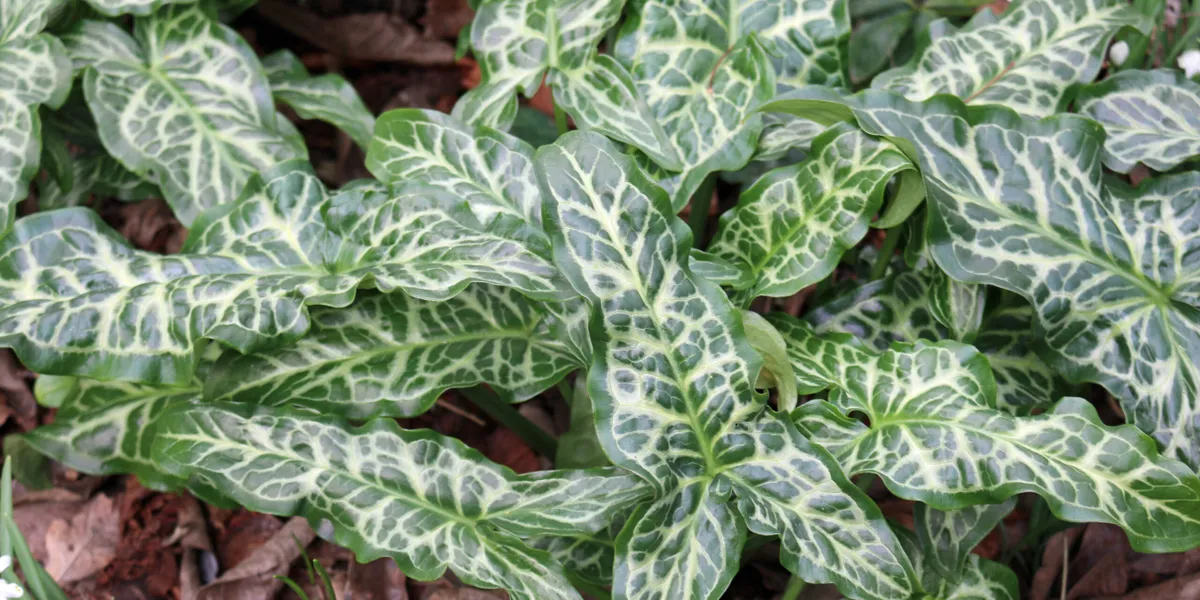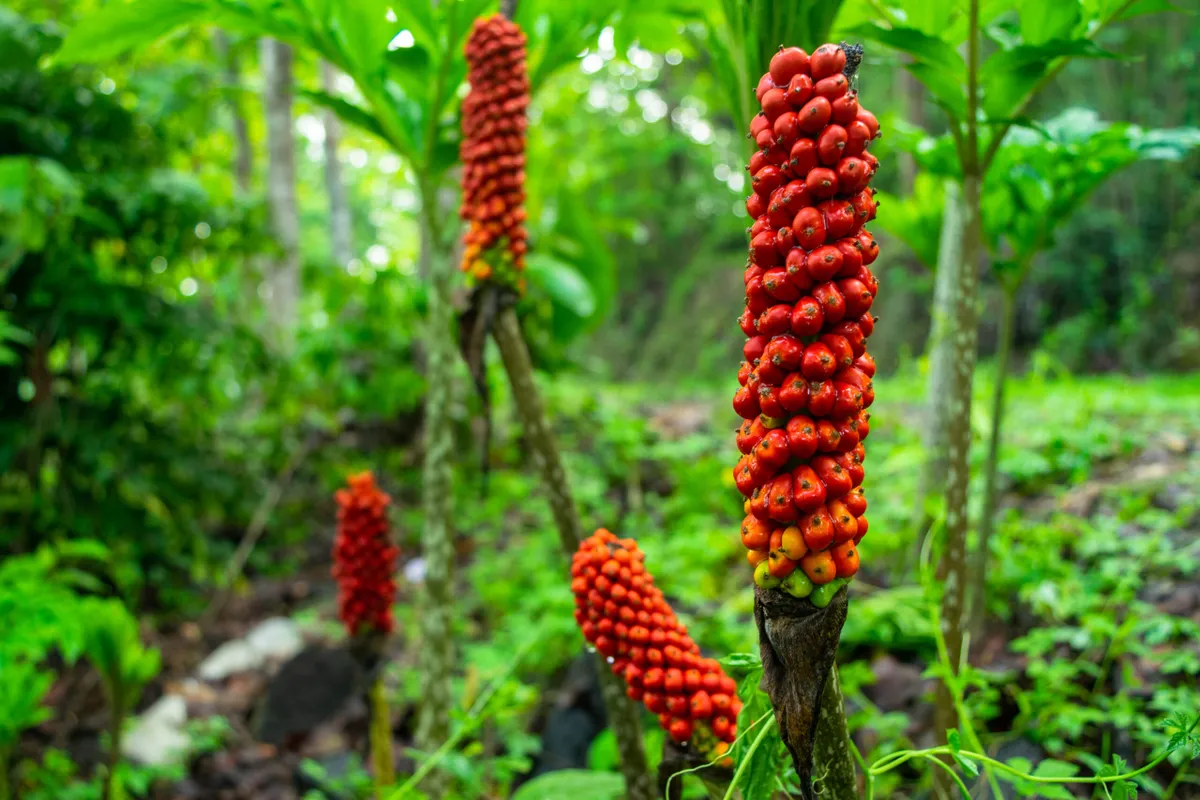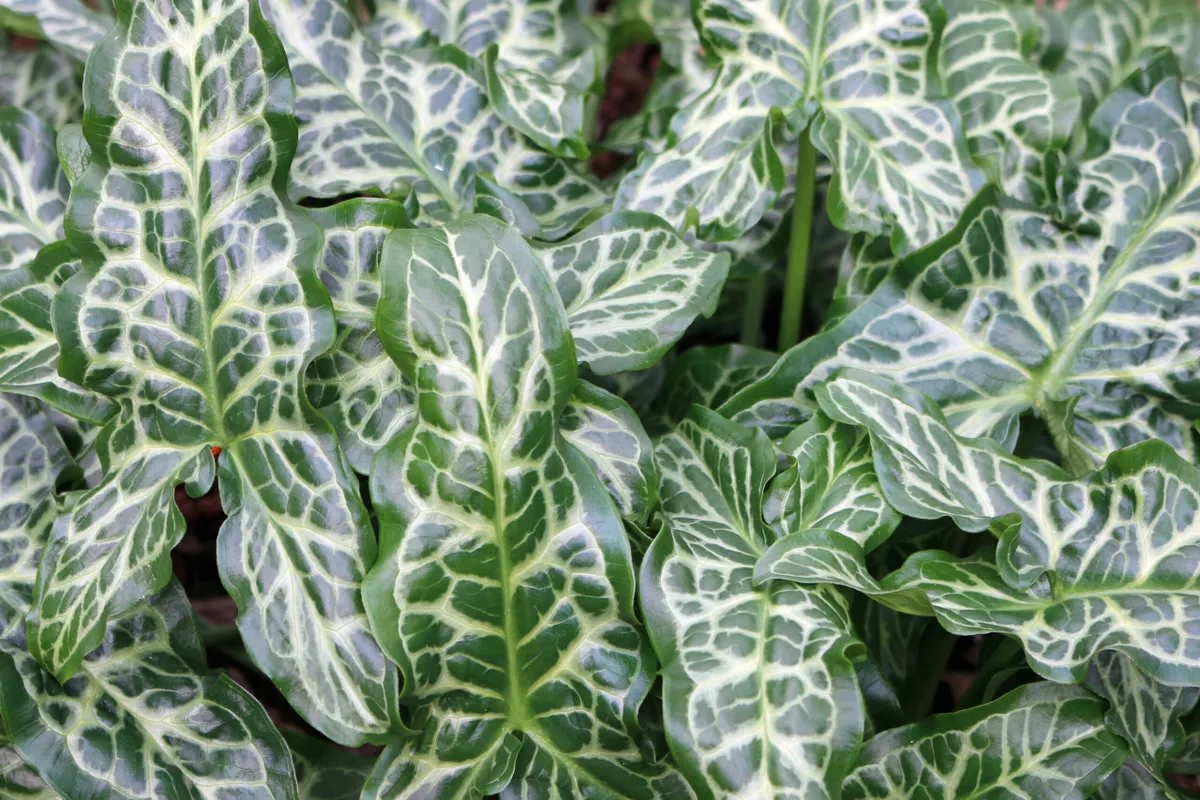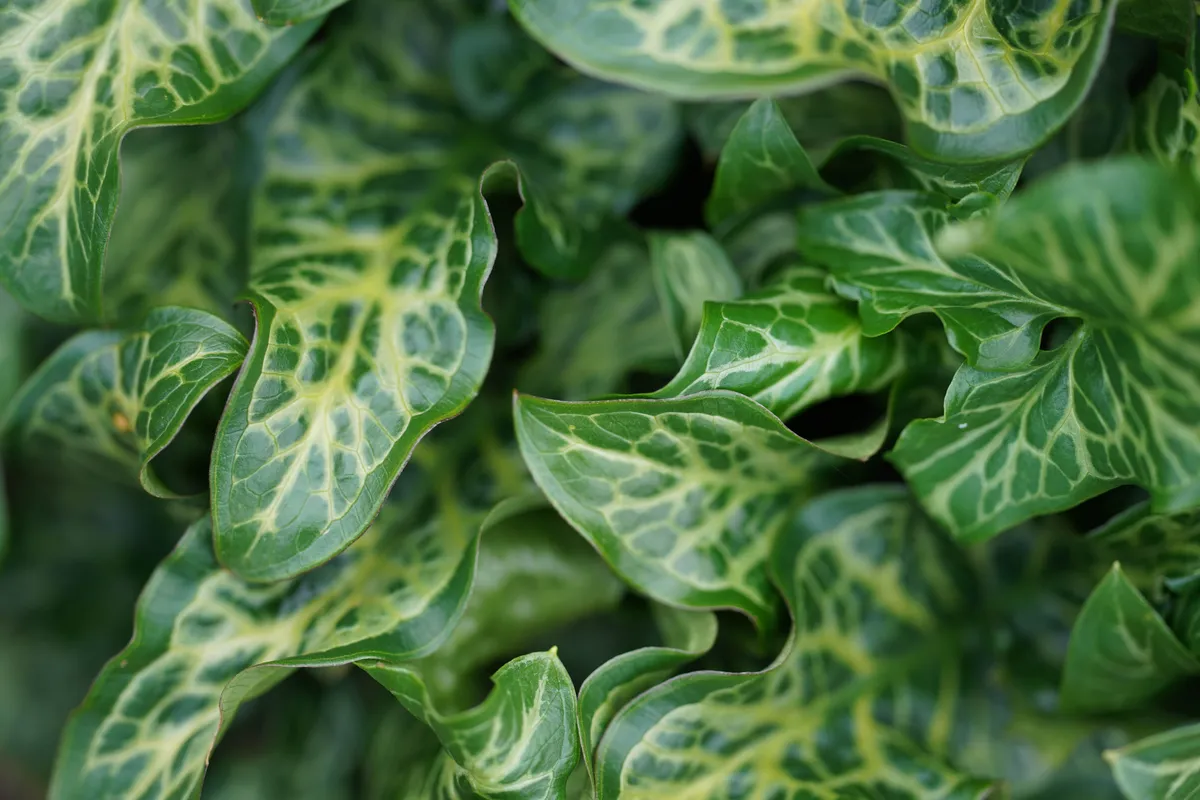Arums are herbaceous perennials that are mostly grown for their bold, spear-shaped and strikingly marked foliage, which is marbled or splashed with white, yellow or silver and often has bold purple spots. The foliage peaks in March and persists until around May.
Most arums come into bloom in spring, producing a distinctive flower head made up of a hood, or spathe. This surrounds a spadix on a fleshy stem, at the base of which is a cluster of small flowers. When the leaves die back later in the season, this is left behind as a berry-encrusted spire, which adds interest to the August garden.
Jump to
- Are arums poisonous?
- How to stop lords-and-ladies spreading
- How to grow arums
- Where to grow arums
- How to plant arums
- Caring for arums
- How to propagate arums
- Arum problems
- What to plant with arums
- Arums to grow
- Where to see and buy arums
The appearance of the flower spike has given rise to a plethora of common names, including lords-and-ladies, friar’s cowl, cuckoo-pint – and many more besides.
Arums are sometimes referred to as arum lilies, but this term is also used for Zantedeschia, and the two should not be confused.
Are arums poisinous?
Yes, all parts of the plant are poisonous, and arums also contain irritant spicules, although the tuber was once used as a source of laundry starch. Birds and other wildlife love the berries of arums and having them in your garden can help boost biodiversity.

Native to much of Europe, including the UK, Arum is a moderate-sized genus of around 28 recognised species of tuberous herbaceous perennials, the most widespread of which is Arum italicum (Italian arum). This is found not just in Italy, but across France and Spain as well is in the Balkans and parts of North Africa.
In the UK, the most widespread native species is Arum maculatum, which means ‘spotted’, and occurs in two types: Arum maculatum f. maculatum, with spotted leaves; and Arum maculatum f. immaculatum, which has plain, green foliage. There is also a small relict population of Arum italicum, found only in Hampshire and Dorset.
How to stop arums, or lords-and-ladies, spreading
Arums have a reputation for spreading, but although cultivars of Arum italicum can creep, Arum maculatum has a more restrained, clumping habit. As the plant gets bigger, the oldest section eventually rots away, leaving small tubers that grow on. These may not necessarily be invasive but they can be hard to get rid of, so ensure you site the plant where you want it.
If you're keen to stem the spread of them, then deadheading, or digging out some plants will help, as will the early removal of seedlings.
You may also like
- How to grow snowdrops
- How to grow winter aconites
- The best evergreen shrubs
- How to use foliage plants in your garden
How to grow arums

Where to grow arums
Arums tend to be hardy, and the species are fairly adaptable to a wide range of situations. Once established, plants will tolerate considerable summer drought, making them a good choice for inhospitable places, such as against walls and under large trees.
Arums generally prefer a cool, shady position, ideally beneath deciduous trees or next to a hedge. There they can take advantage of good light in early spring, when they’re in full growth, and will be protected from summer heat once the canopy closes.
Arums prefer good, humus-rich soil, so enrich with compost or leaf mould before planting, and mulch well.
How to plant arums
Planting depth is unimportant, as arums can adjust their position in the soil so that they are growing at the optimum level in any given location. New acquisitions should be planted out promptly, however, as container growing risks the pot freezing through in winter, damaging the roots and killing the plant.
Caring for arums
The spike of berries looks beautiful in late summer, but remove it as it starts to disintegrate to discourage self-seeding. There is no need to feed arums.

How to propagate arums
Arums are long lived and form good-sized clumps over time. To spread a named cultivar around the garden, it’s best to dig up the plant and propagate by division in autumn or spring. Take care when moving or dividing growing plants, as sappy young shoots can be brittle and easily break off. Smaller plants can be grown in pots in a protected area until they are large and resilient enough to go outside.
Arum problems
Few pests and diseases attack arums, but in wet years, leaves can develop black spots thanks to the bacterial infection Pectobacterium carotovorum. Damage is usually fairly minimal, although rather worse in pots, and should be tolerated.
Pheasants love the berries and the spadix, and have even been known to pull tubers out of the ground.
What to plant with arums
Arums combine well with plants such as ferns, hellebores and evergreen ornamental grasses, and adding texture to swathes of snowdrops.
Emerging in autumn, larger hybrids such as Arum ‘Chameleon’ and Arum ‘Streaked Spectre’ make impactful foliage plants, while smaller cultivars can be grown as a carpet of green and white to set off the colourful winter stems of Cornus alba ‘Sibirica’ or Cornus sanguinea ‘Anny’s Winter Orange’. Trees are a natural companion and arums are attractive planted under acers, and ideal as an addition to an ornamental woodland.
Arums to grow

Robust Arum italicum can be large and, while it may spread, its cultivars are worth considering for the back of a woodland border, or in very dry shade where less vigorous plants might struggle.
Cultivars of Arum maculatum, such as ‘Lady of Devon’ and ‘Fletcher’, are well-behaved, forming neat clumps of fresh foliage.
Where to see and buy arums
Chris Cotterell 3 Park View, Whitchurch, Hampshire RG28 7FE. National Plant Collection holder who opens his garden by appointment. plantheritage.org.uk
Edulis Nursery The Walled Garden, Tidmarsh Lane, Pangbourne, Berkshire RG8 8HT. Tel 01635 578113, edulis.co.uk
Kevock Garden Plants Kevock Road, Lasswade, Midlothian EH18 1HX. Tel 0131 454 0660, kevockgarden.co.uk
Monksilver Nursery Oakington Road, Cottenham, Cambridge CB24 8TW. Tel 01954 251555, monksilvernursery.co.uk